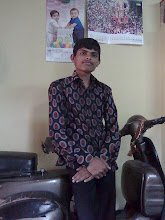UNIT I: Number System and Codes
Number systems: Decimal, binary, hexadecimal, Octal number systems with mutual conversion,
Binary arithmetic in computers BCD Addition, Subtraction
Binary code: Weighted and non-weighted codes, Error detecting and Correcting codes, ASCII Codes,
Hamming Code, Alphanumeric Codes
UNIT II: Boolean algebra &Logic Gates
Development of Boolean algebra, Boolean logic operations, AND, OR, NOT, Universal building
blocks, Basic laws of Boolean algebra, Demorgan’s Theorem, Minterms & Maxterms, Deriving SOP
& POS Expression from Canonical & standard form, Truth table, Karnaugh map (up to five
variables), Minimization of logic function in SOP, POS and mixed term, Incompletely Specified
functions, Multiple output, Minimization using Quine McClusky or Tabulation method.
Logic Gates: Positive and Negative Logic, Designation, OR, AND, NOT, NAND, NOR, XOR,
XNOR, gates, Multilevel Gating Networks, NAND and NOR implementation, XOR and Equivalence
function.
UNIT III: Combinational Circuits And Systems
Design procedure: Adder, Subtractor, Binary parallel adder, Serial adders, Decimal adders, and Fast
adders, Multiplexers, Demultiplexers, Decoders, Encoders, Priority encoders, Parity generator/
checkers, Magnitude comparators, Code converters, Programmable logic array (PLA), ROM,
Application of Multiplexers, Decoders and Comparators.
UNIT IV: Flip flop and its applications
Flip flop: Types, SR, JK, D and T type flip-flop, Triggering of Flip flops, Master Slave flip flop,
Realization of one flip flop using other flip flops,
Registers and counters: Shift register, Bi-directional register, Asynchronous counter, Binary ripple
counters, Asynchronous up-down counters, Synchronous up-down counter, Design of modulo-N
synchronous counter, Ring counters, Sequence generator using counter.
UNIT V: Memory devices& Sequential machines
Classification of memories, semiconductor ROM and RAM, Organization of RAM,
Memory subsystem, Timing circuit, clock circuit and IC timer.
Design of synchronous sequential machines: Basic concepts, synchronous sequential machine
models, design of synchronous sequential circuit, sequence detectors, odd/even parity generator,
Basic concept, asynchronous sequential circuits, Design of fundamental mode of asynchronous
sequential circuit by Flip flops
Text Books: 1. “Digital logic and concept design”, Morris Mano, PHI Pbs.
2. “Study, theory and logic design” Jain, TMH
Reference Books:
1. “An Introduction To Digital Computer Design”, V, Rajaraman and Radhakrishnan, 3rd
Edition, PHI Pbs.
2. “Digital Principles And Application” Malvino & Leach, 4th Edition, McGraw Pbs.
3. “Digital circuit and design”, Taub and Schelling, TMH.
4. Digital circuit and design, Salivahan and Aricozhagan, Vikas Pbs.
Number systems: Decimal, binary, hexadecimal, Octal number systems with mutual conversion,
Binary arithmetic in computers BCD Addition, Subtraction
Binary code: Weighted and non-weighted codes, Error detecting and Correcting codes, ASCII Codes,
Hamming Code, Alphanumeric Codes
UNIT II: Boolean algebra &Logic Gates
Development of Boolean algebra, Boolean logic operations, AND, OR, NOT, Universal building
blocks, Basic laws of Boolean algebra, Demorgan’s Theorem, Minterms & Maxterms, Deriving SOP
& POS Expression from Canonical & standard form, Truth table, Karnaugh map (up to five
variables), Minimization of logic function in SOP, POS and mixed term, Incompletely Specified
functions, Multiple output, Minimization using Quine McClusky or Tabulation method.
Logic Gates: Positive and Negative Logic, Designation, OR, AND, NOT, NAND, NOR, XOR,
XNOR, gates, Multilevel Gating Networks, NAND and NOR implementation, XOR and Equivalence
function.
UNIT III: Combinational Circuits And Systems
Design procedure: Adder, Subtractor, Binary parallel adder, Serial adders, Decimal adders, and Fast
adders, Multiplexers, Demultiplexers, Decoders, Encoders, Priority encoders, Parity generator/
checkers, Magnitude comparators, Code converters, Programmable logic array (PLA), ROM,
Application of Multiplexers, Decoders and Comparators.
UNIT IV: Flip flop and its applications
Flip flop: Types, SR, JK, D and T type flip-flop, Triggering of Flip flops, Master Slave flip flop,
Realization of one flip flop using other flip flops,
Registers and counters: Shift register, Bi-directional register, Asynchronous counter, Binary ripple
counters, Asynchronous up-down counters, Synchronous up-down counter, Design of modulo-N
synchronous counter, Ring counters, Sequence generator using counter.
UNIT V: Memory devices& Sequential machines
Classification of memories, semiconductor ROM and RAM, Organization of RAM,
Memory subsystem, Timing circuit, clock circuit and IC timer.
Design of synchronous sequential machines: Basic concepts, synchronous sequential machine
models, design of synchronous sequential circuit, sequence detectors, odd/even parity generator,
Basic concept, asynchronous sequential circuits, Design of fundamental mode of asynchronous
sequential circuit by Flip flops
Text Books: 1. “Digital logic and concept design”, Morris Mano, PHI Pbs.
2. “Study, theory and logic design” Jain, TMH
Reference Books:
1. “An Introduction To Digital Computer Design”, V, Rajaraman and Radhakrishnan, 3rd
Edition, PHI Pbs.
2. “Digital Principles And Application” Malvino & Leach, 4th Edition, McGraw Pbs.
3. “Digital circuit and design”, Taub and Schelling, TMH.
4. Digital circuit and design, Salivahan and Aricozhagan, Vikas Pbs.




















